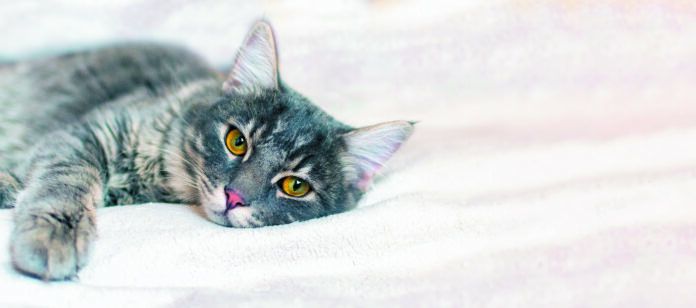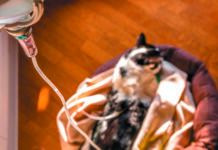About half of rib fractures suffered by cats result from the kinds of mishaps you would expect — getting hit by a car, falling from a tree or other high spot, or a tussle with another animal. Diagnosis is pretty straightforward, and supportive care is given to the cat to get him through the pain as well as to help heal any other injuries that may have occurred because of the physical trauma. The median age of cats who end up with a fractured rib because of an accident is 3 years, according to research conducted by investigators at Tufts’ Cummings School of Veterinary Medicine. Vehicular trauma accounts for more cases of broken ribs than any other type of blunt force.
But the other half of rib fracture cases — sometimes multiple rib fractures at once — has nothing to do with a hit to the body. They occur in cats with conditions that cause breathing problems or diseases that could negatively impact the integrity of the ribs. Those cats have a median age of 13, the Tufts researchers found, and their pain might be missed.
But the other half of rib fracture cases — sometimes multiple rib fractures at once — has nothing to do with a hit to the body. They occur in cats with conditions that cause breathing problems or diseases that could negatively impact the integrity of the ribs. Those cats have a median age of 13, the Tufts researchers found, and their pain might be missed.
How could disease lead to rib fractures?
Why would the ribs be involved in conditions such as those associated with breathing? When a cat (or a person) takes a breath, certain muscles contract, pulling the ribs outward and forward, effectively shortening the rib cage. If an animal is healthy, it all works fine. But if there’s a disease that affects the airways such as asthma or a heart condition, the force and work required to take in a breath is greater, and the constant stress of breathing in and out could eventually cause a rib to break. It is called a stress fracture.
It happens with people, too. Stress fractures of the ribs have been reported in association with episodes of coughing and other problems that impact how smoothly breathing works.
In the cats with broken ribs studied by the Tufts investigators, several had lower airway disease and chronic cough. One had nasal discharge and sneezing. A number of cats had pleural effusion — fluid around the lungs that makes breathing a more arduous task. All of those contributors to the mechanical stress of breathing can finally take their toll on the ribs.
Certain illnesses that don’t involve breathing can lead to ribs breaking, too, the researchers found. One is chronic kidney disease. Kidney disease can weaken the bones by decreasing bone density — the balance of calcium and other minerals is thrown off — and since ribs are a type of bone, that means they become more vulnerable to breakage.
Certain cancers can also weaken the ribs, if the malignancies invade the ribs and interrupt their structural integrity. Some cancers can also make it harder to breathe, which goes back to respiratory issues. The investigators found that two of the cats had masses that obstructed their upper airways.
Going forward
Rib fractures are not common in cats, the researchers make clear, but probably occur considerably more commonly than was previously thought. The Tufts scientists suggest that when a veterinarian comes upon a rib fracture incidentally, he or she should not automatically assume it developed because of an accident but that perhaps the cat has a potentially rib-fracturing disease that has not yet been diagnosed.
On the flip side, if a vet sees a cat with a breathing problem, late-stage kidney disease, or a malignancy that can at least partially block air flow and make respiration more difficult, the doctor might want to consider that one or more ribs may have been affected. “Clinical signs associated with rib fractures in cats may be subtle and overlooked,” the researchers say. “However, rib fractures are…painful, and pain assessment is a vital part of therapy in cats.”
The resiliency of the feline chest decreases the risk for rib fractures resulting from an accident. In one study, one in four dogs who suffered bone fractures due to a motor vehicle accident also had concurrent rib fractures. But in a similar study in cats, only about one in 75 cats were found to have rib fractures along with other bone breaks after a physical trauma.
Rib fractures resulting from accidents occur pretty much anywhere in the rib cage, depending on where the cat is hit. But cats who have conditions like breathing problems tend to end up with fractures in the ribs closest to the tail. That’s the location subjected to the highest forces associated with breathing, making the ribs in that area most vulnerable to stress fractures.




